Swannichiwa, everyone, and welcome to another episode of Anyway, Here's WonderSwan. Like all ugly ducklings, I've always regarded swans with a sense of wonderment but could never be one (I think that's how the story goes) so getting up and close with (a virtual approximation of) Bandai's WonderSwan has been nothing if not eye-opening. We're three entries into this feature now and I've plenty of WS games I still want to check out and plenty more besides that I'm sure will be dumped on me to poorly decipher with the extremely limited Japanese at my disposal. Still, much like a jar of those mercurial Jelly Belly jelly beans, you've just gotta take a handful at a time, drop them into a glass of warm milk, and chug down that coagulated mess one labored mouthful at a time. Oh, what, you think there's a better way of eating jelly beans? I'd like to hear it. (Please don't fill the comments with jelly bean consumption tips, I'm just being facetious for the opening bit. It's getting so hard to write these things.)
There are rules to observe but nothing too restrictive: in each entry I have five WonderSwan games chosen for me by a random chooser app that I randomly chose from the several available (see how they like it) and I spent some amount of time with each, delineating what they are, where they're from, who worked on them, and how well the game has held up after twenty years of incremental portable gaming advancements. Since the device was made by Bandai, there's also going to be a higher-than-recommended quota of anime licensed games, so I'll probably talk about those licenses too. Gotta fill that imaginary word count somehow. Last month I sat down the Random Chooser Union to hash out the first of what I hope to be many (personally) beneficial rulings going forward: the "Lucky 7s Clause", which turns every seventh entry into a user-chosen game choice instead of a randomly-determined one. Since we're covering games 11 through 15 this time, that means #14 is our fortunate winner and I've elected to use the opportunity to try out a WonderSwan-exclusive spin-off from a well-regarded (if not particularly busy) platformer franchise from Namco.
If you are just joining us, be sure to check out Part One and Part Two by pressing on the words that are all orange and shit.
Anyway, here's WonderSwan:
#011: Super Robot Taisen Compact for WonderSwan Color
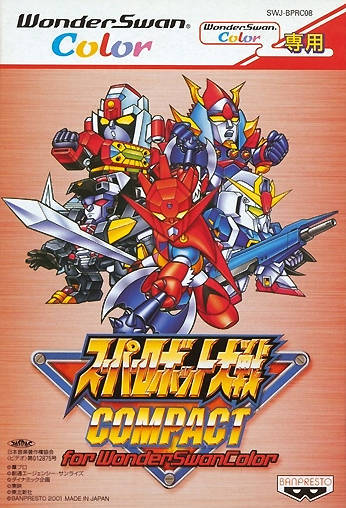
- Developer: TOSE
- Publisher: Banpresto
- Release Date: 2001-12-13
- Inscrutability: Major
- Is This Anime?: Yes. Several.
Field Report: I should've figured we'd be dealing with a Super Robot Wars game eventually. The system has six of them, for the record, though three appear to be a single game broken up into a trilogy of releases. Banpresto's been making these crossover mecha anime strategy games since the 8-bit era—the first two both released in 1991, for the Game Boy and Famicom (NES) respectively—and this "Compact" version was the tenth overall. This one's actually a remake of the first Super Robot Taisen Compact which released on the standard black & white WonderSwan back in April '99; this release simply colorizes it, though there may be a few other enhancements here and there.
Banpresto was a struggling minor game company called Coreland until Bandai bought a majority share, changed its name to Banpresto (a portmanteau of Bandai and "presto", the magician lingo for making something suddenly appear, perhaps say after only a few months of game development), and had them work on licensed games for properties that Bandai had procured the rights to. Their biggest success by far was Super Robot Wars, which spun off the Compati Hero series of crossovers, to the extent that they often needed contractors like TOSE (the biggest contract game development firm in the world, or certainly the busiest) to meet demand for all those warring little TV mecha.
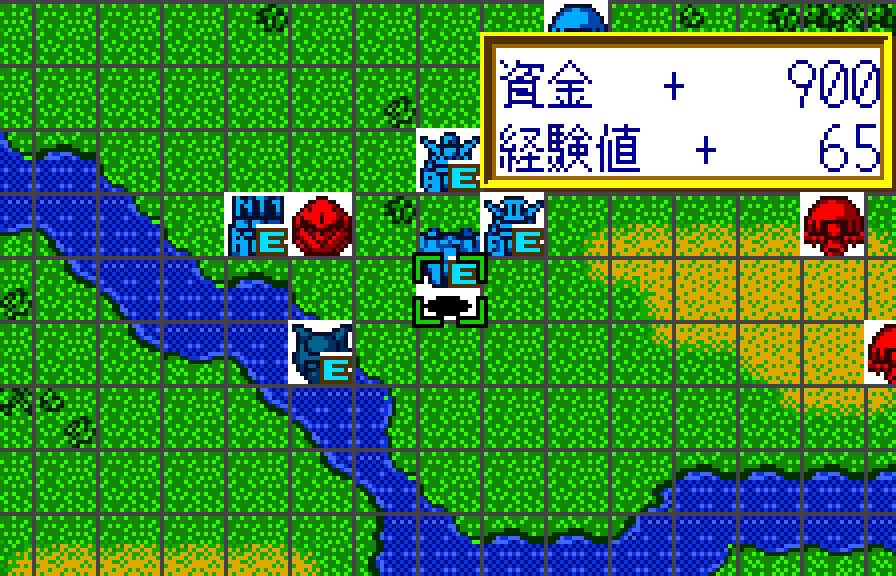

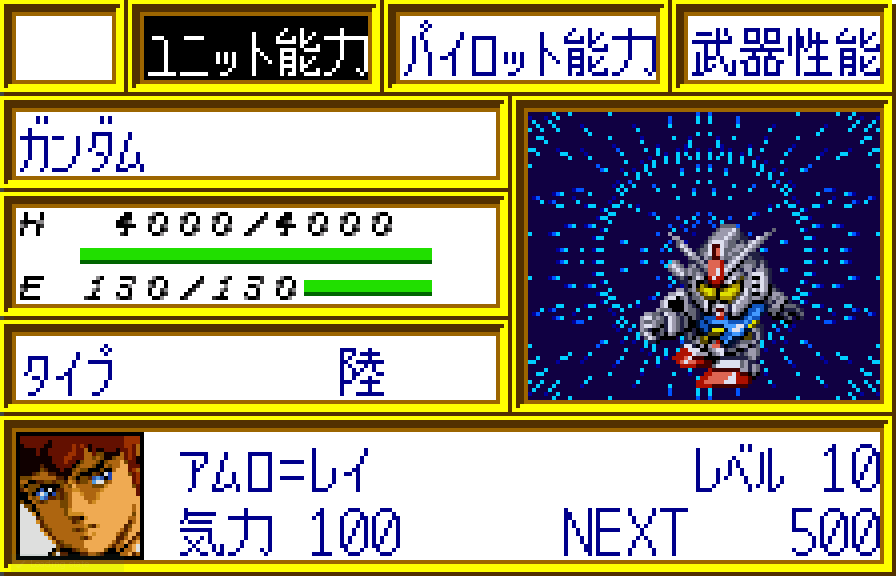
SRW is your typical strategy RPG, so that just means moving units around on a map and ganging up on enemies to take them out one at a time. Of course, I've have done a lot better if I could read any of the attack descriptions—most of my units had several to choose from, though more than half were usually greyed out because I didn't fit one condition or another—and I ended up losing a few of my units to some bad luck. One instance had Char Aznable, one of the few Gundam characters I can recognize, take out one of the Gundam protagonists (it wasn't Amuro Ray, but that dude was present) and then decide he'd done enough and just bailed. That first fight then ended shortly after with some kind of floating battleship emerging from the enemy base and all the allied units leaving the map one after the other; I wondered if I lost due to a time limit or some other fail state, but I was given the option to save right after so I guess it was the intended path to complete that map.
Either way, without understanding what's going on, what options I have available, who anybody is, and what anyone is saying to anyone else there's a limited amount of engagement here. It seemed kinda slick, at least? Not to mention the type of session-based RPG that might be perfect for a portable. I'll admit that I'm sorta tempted to find one of the few SRW games that can be played in English to see if I can piece together what the deal is (or just play the second Project X Zone, since it's mostly the same deal).
Time Spent: It took about 30 minutes to clear that one map.
#012: Blue Wing Blitz
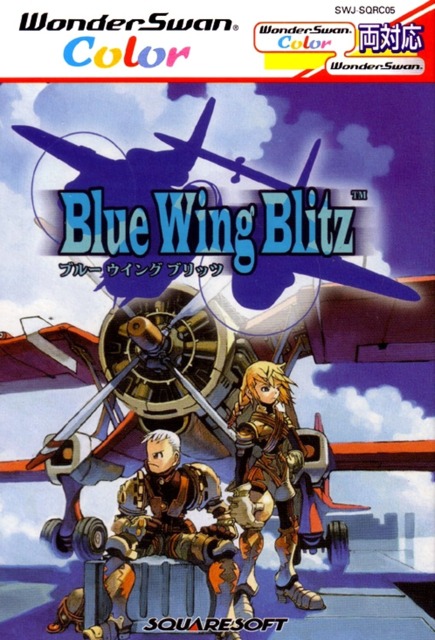
- Developer: Squaresoft
- Publisher: Squaresoft
- Release Date: 2001-07-05
- Inscrutability: Major
- Is This Anime?: Nah.
Field Report: Hooray, we have our first Squaresoft game on here. Squaresoft famously stormed away from Nintendo systems after the latter refused to budge on producing a CD-based console, though Square themselves weren't averse to the occasional release on non-optical media: they still had an interest in developing for portables, it turns out, but given their beef with Nintendo they took those ideas to Bandai and WonderSwan instead of Game Boy Color and Advance (if only for a while, in the case of the latter). Blue Wing Blitz is a typically off-beat idea of theirs, one that took their earlier Bahamut Lagoon SFC strategy RPG comprised of mostly winged units fighting over floating islands and then married it to the modern military stylings and vehicle customization of Front Mission (the same team worked on both) to create this game about a colorful group of flying aces taking on missions in their fighter and bomber planes in open rebellion against a technologically-superior expansionist empire (so what else is new for Square?). Each named character has a distinct aircraft and role to play in combat.
I'm not going to explain who Squaresoft are but I do want to confirm my intention of eventually trying out every Squaresoft game they put out on WonderSwan, including all the Final Fantasy and SaGa ports. They published ten in total, seven of which they developed themselves and three of those were unique to this system (Blue Wing Blitz being the third and last of them). In terms of staff we have SaGa creator and all-round game designer oddball Akitoshi Kawazu as the producer, the aforementioned Front Mission team on development, and Kumi Tanioka as the composer. This was actually one of Tanioka's first big solo projects while employed at Square: she'd achieve greater renown through her work on the Final Fantasy Crystal Chronicles sub-franchise, almost all of which were solo projects of hers too, before leaving Square and going freelance in 2010.

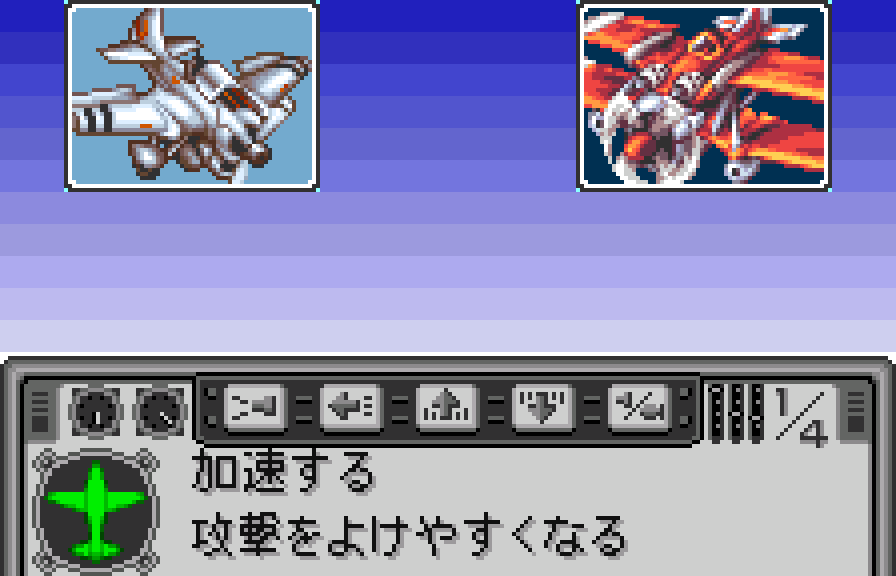
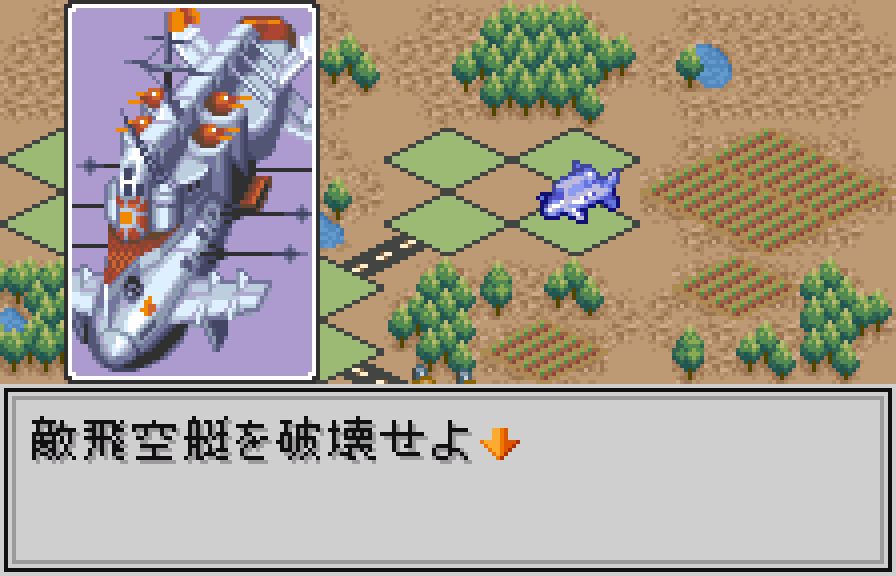
This game is much more complicated than I first anticipated, owing to its focus on aerial combat. There's multiple maneuver types you can employ in addition to your weapon types so dogfights tend to be battles of procuring a superior position over your opponent before swooping in for the kill. It's somewhat intuitive as they give you a tiny action window to help make sense of where you are in relation to the other guy, whether you're currently above or below or chasing or being chased, and you can work out from there which approach will make the most sense. Every "round" includes an attack stage and a damage stage, and the battle ends after four of these exchanges following which you can either fly away or stick around for another assault. The tutorial I played had one rival airplane, a guy that I couldn't seem to beat, before I was instructed to shoot the crap out of a non-hostile stationary ground target (it was a shed) which was much easier. The story then kicked in and the protagonist and what I believe to be his female instructor (and probably future love interest) then had to deal with this enormous war blimp that showed up out of nowhere and started shelling my man's hometown, and I wasn't anywhere near confident enough about my grasp on the game to attempt to shoot it down.
I will say that they definitely thought about how a "Front Mission in the skies" would work, with aerial warfare that would be riveting if I knew how any of it ticked, and the concept of an anime war drama a la Valkyria Chronicles sounds like it might be fun. Going to have to wait until a fan translation appears though, since the mechanics seem a bit too involved to play blind.
Time Spent: Around fifteen minutes.
#013: Guilty Gear Petit
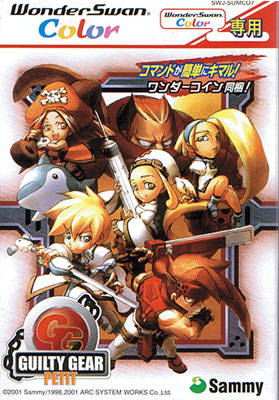
- Developer: Arc System Works
- Publisher: Sammy
- Release Date: 2001-01-25
- Inscrutability: Minor
- Is This Anime?: You'd think, but no.
Field Report: Guilty Gear Petit is, as you might extrapolate from the name, a compact version of the anime fighter Guilty Gear and the first of two spin-offs that Arc System Works produced for the WonderSwan Color. In the chronology of the series, we're talking halfway between Guilty Gear X and Guilty Gear XX, so maybe like a Guilty Gear X and a Half. It uses a chibi "super deformed" style to make the otherwise elaborate character designs work on a tiny handheld and even features a spin-off-unique fighter in Fanny, a nurse with a connection to Dr. Baldhead (before his atonement arc as Faust) and who fights with a similarly idiosyncratic style.
Arc System Works established themselves as contract developers at first, frequently working with Sammy, Sega, and Bandai (the last of those possibly prompting their presence here) before starting their own original projects like Guilty Gear. Sammy had been and would be the main publisher for the Guilty Gear franchise, at least for the first few years, and that's the case here too. By 2001 Sammy had more or less begun to bow out of video games to focus on their pachinko and pachi-slot enterprises, eventually acquiring and merging with former hardware makers Sega to allow the latter to control the video game portion of their portfolio while they focused on shooting balls around tables. Kind of like if Bakalar merged with Grubb to form a single "SuperJeff" unit where he could just play pinball and leave all the games talk to his more hirsute half. Man, that's a weird mental image right there.
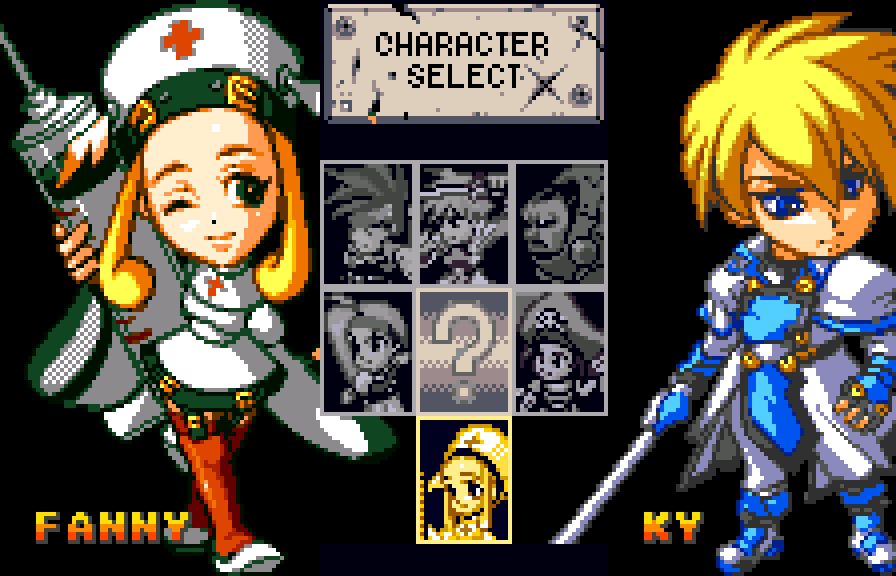
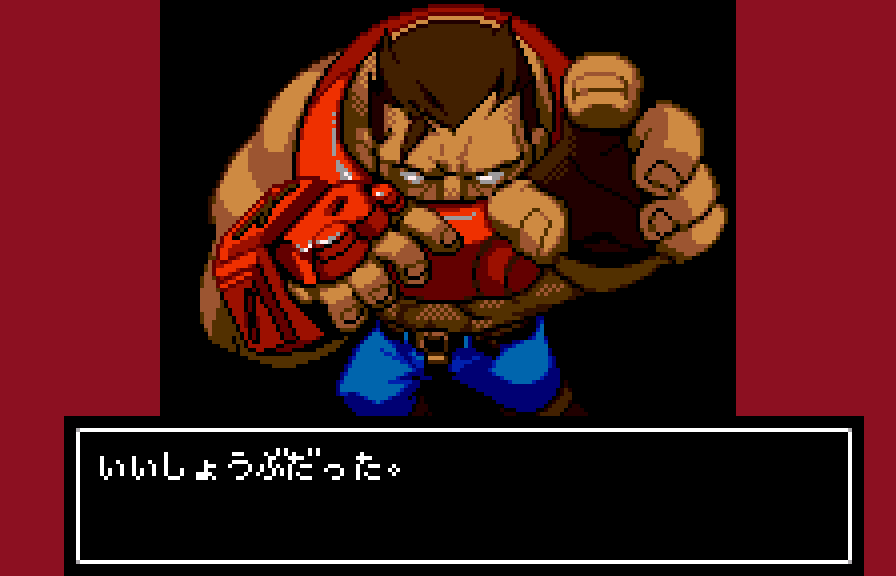

The default character options are Sol Badguy, Ky Kiske, Potemkin, Millia Rage, May, and new girl Fanny (Jam's in this too, but I guess she's a secret/unlockable character). Like any non-scrub I went for Potemkin and spammed his Potemkin Buster to complete the story mode. It's a really effective move, I'm surprised more Potemkin players don't use it. Actually, I couldn't get the half-circle motion to work and I forgot all his other moves so I just went for normals. Did the job on the default difficulty though: due to Potemkin's enormous reach, only the late-game fights against Jam and Fanny gave me any issues, the latter apparently serving as the boss of the game.
I'm not a fighter guy so getting into individual characters and checking out their meta in the lab didn't really appeal, and the game's like other portable fighters at this time where it felt a bit too streamlined for its own good (I own Street Fighter Alpha 3 for GBA as well, and while remarkably smooth for what it was it didn't hold my interest long either). Plus, I'd want to be to able to read the story if I'm taking on that mode with the other characters. Got some RetroAchievements out of it at least.
(I couldn't tell you what the smell of this game was. Maybe a pepperjack cheese mixed with fresh grass cuttings?)
Time Spent: That story completion run took 12 minutes and I've opted to retire on top.
#014: Kaze no Klonoa: Moonlight Museum
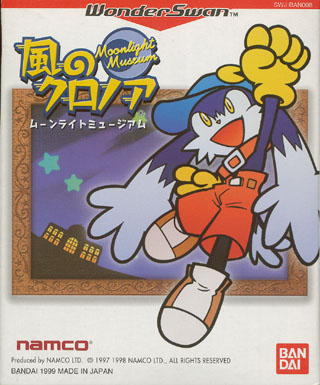
- Developer: Namco
- Publisher: Bandai
- Release Date: 1999-05-20
- Inscrutability: None (Fan Translated)
- Is This Anime?: Nope. Not an STD either.
Field Report: Kaze no Klonoa: Moonlight Museum ("Kaze no Klonoa" simply meaning "Klonoa of the Wind", the franchise's Japanese title) is a portable spin-off of everyone's favorite... cat... boy... rabbit... thing? from Namco, Klonoa. It was released right in-between the two main games—1997's Klonoa: Door to Phantomile for the PlayStation and 2001's Klonoa 2: Lunatea's Veil for PS2—and was the first of several portable Klonoa spin-offs. Moonlight Museum looks and plays much like its GBA successors Empire of Dreams and Dream Champ Tournament (albeit with fewer colors): the game ditches the "2.5D" visual gimmick of the core games and switches the focus from action to puzzle-platforming, dropping you into maze-like levels and having you figure your way out. Moonlight Museum's basic plot has Klonoa and his flying companion Huepow (I guess they met up again?) visit the titular institution to track down missing fragments of the moon: a bunch of eccentric artists took them to spruce up their creations, and now Klonoa has to enter the worlds of those artworks to recover the fragments. (Jumping into portraits to be whisked off to magical worlds was a big thing in platformers at the time, what can I say?)
And so we meet Namco proper on this feature. We had a tangential encounter through Final Lap Special (#009), which was a spin-off of a Namco arcade racing franchise developed by a third party, but for this original Klonoa entry they showed up in person. Persons. People. Pretty sure Namco is more than one guy, anyway. Namco would eventually develop five games for the WonderSwan, each of which was a unique(ish) entry in a pre-existing franchise of theirs: seems they weren't averse to developing on the platform, but maybe weren't going to take any big risks with a new IP either. In total, they developed a WonderSwan game each for Klonoa, Tekken, Famista, Kosodate Quiz: My Angel, and Mr. Driller. I know which one of those I'd prefer to try out next (and it's totally the Japanese-language trivia game about raising a daughter).
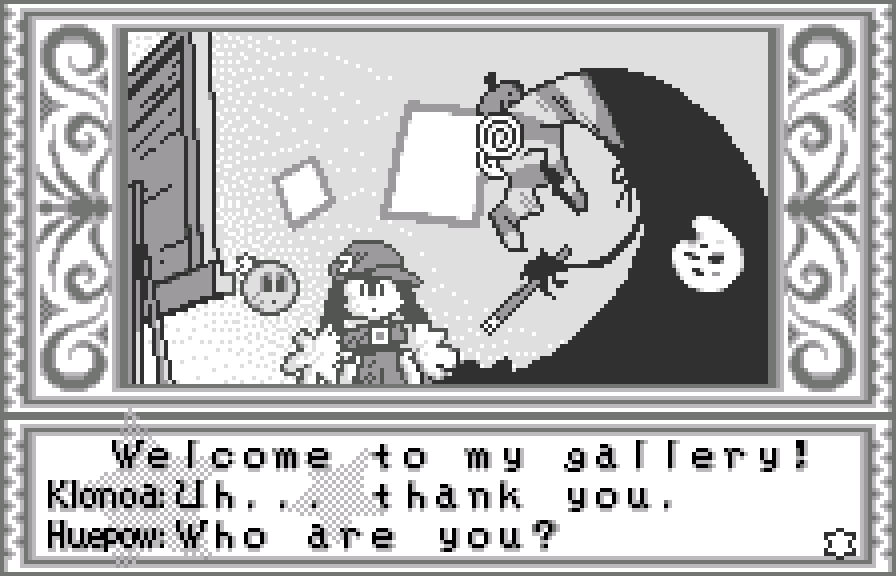
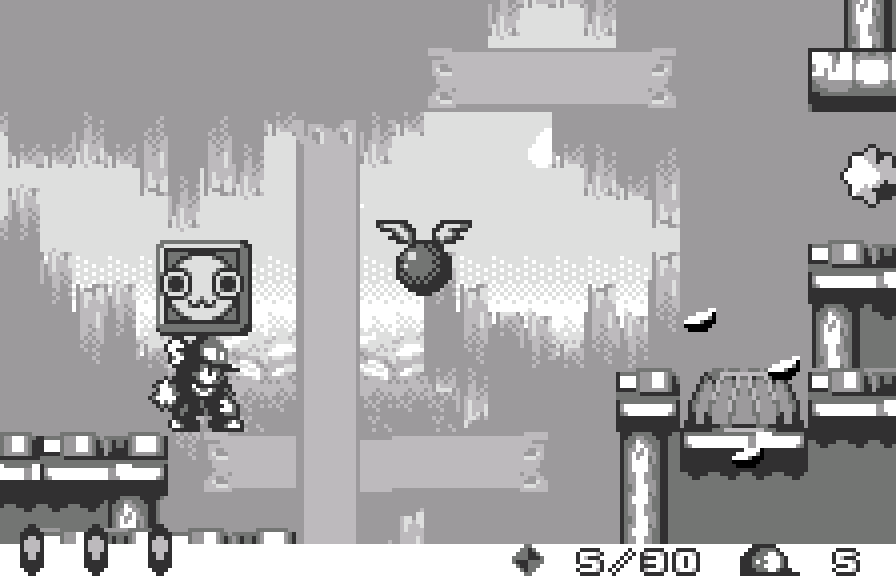

As in all the other games, Klonoa's main skill is a "wind bullet" that allows him to carry inflated enemies and toss them around: not only does this temporarily put the enemy out of commission but you can throw them at switches to activate them or leap off them in mid-air for a double-jump. Klonoa can also do the same for certain blocks, which won't be destroyed when thrown/leapt off. Most of the puzzles revolve around this technique, as well as special qualities of certain enemies—the "boomies", for example, will explode after a certain amount of time which can be useful for destroying barriers—or stage hazards and features, the latter including things like vertical wind flues that push you towards the ceiling unless you block them. It's a pretty inventive game, usually introducing at least one new mechanic in each of its 36 normal stages (there's also six ultra-hard "EX" stages that unlock in the post-game). The loop of each stage is to find three moon fragments and head to the exit, though there's the optional goal of finding 30 smaller gems found either as tiny diamonds worth one each or larger crystals worth five. Despite slowing me down quite a bit, I've been pursuing the Retro Achievements set for the game which requires you to complete every stage with all gems and without getting hurt: it started getting a lot tougher around World 4 due to the number of annoying enemies to deal with.
This is the first WonderSwan game covered so far that I felt compelled to finish, in part because it never stopped being surprising and in part because I got that completionist tick burrowing into my skull. Right now I just have the EX levels to tackle, but the whole "no damage" thing might be a dealbreaker so I'll leave those for another day. On the whole the game wasn't that taxing, even with the all the bonus requirements foisted upon me by the RA set, but it was a pretty solid base for the portable Klonoa games going forward. Puzzle games have always been the best genre for this format, after all, so it made sense to double-down on that aspect rather than try for the spectacle of the PS1/PS2 games which a black and white handheld was in no shape to replicate. Glad I decided to do a deeper dive on this lesser-known Klonoa and here's hoping the WonderSwan has some other games of a similar caliber. (Speaking of which, I bought that Phantasy Reverie remake compilation a little while ago so I should probably get around to booting it up.)
Time Spent: It took around six hours to roll credits.
#015: Gomoku Narabe & Reversi Touryuumon
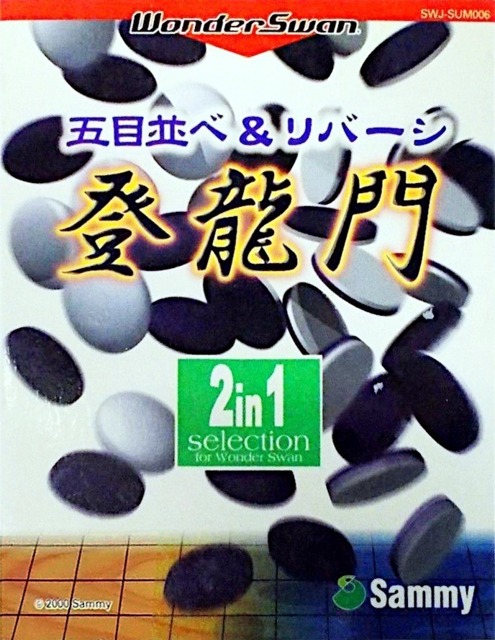
- Developer: Sammy
- Publisher: Sammy
- Release Date: 2000-01-13
- Inscrutability: Minor, unless you don't know how to play these board games.
- Is This Anime?: Pretty boring anime if it was.
Field Report: Well, this should be a short one. Gomoku Narabe and Reversi are the two games you can play on a Go board that aren't Go. They're both much simpler than Go too, at least in terms of figuring out what to do if not in figuring out how to be better at it than your opponent, so they're well-liked by kids. In Gomoku Narabe the goal is to make a straight line of five tiles while blocking your opponent's attempts to do the same, and in Reversi (also known as Othello) you place tiles on either side of an opponent's piece to flip it to your color with the goal being to have the most tiles when the board is full. Sammy put out three of these "Touryuumon"—which means gateway, in a metaphorical sense of a barrier to overcome—board game adaptations for WonderSwan and this is the third and last, following Mahjong Touryuumon and Shogi Touryuumon.
I've already dropped some lore above about Sammy's status as a developer in the early '00s, but I'll add to that by saying that they published eight games for the WonderSwan in total and four of those they developed themselves. Those eight include all three of these Touryuumon games and the two Guilty Gear Petit fighters; the others include the two strategy games Anchorz Field and Armored Unit as well as Nice On, one of only two golf games for the system.


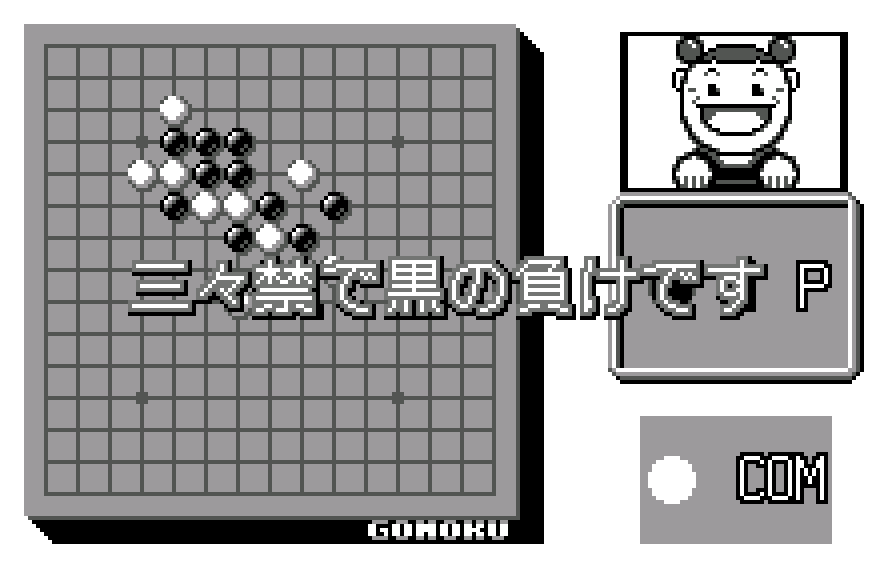
The one Reversi game I played resulted in a resounding victory over the default CPU level, so most of my time was focused instead on the Gomoku mode which the CPU was way better at. In fact, I couldn't beat it once. Half the time the CPU managed to outfox me by creating an "open" row of four—that is, a row that doesn't have either end blocked off—which in Gomoku terms is basically "checkmate in one move" and unsurviveable. The other half of the time I kept falling afoul of some odd rule that I couldn't read. A little bit of research later and I realized the game was actually playing under the Renju ruleset, which prohibits the black player (who always goes first, in a reversal of the chess standard) from making certain moves as they'll have too much of an advantage otherwise. The one I kept running into was the "three and three" rule, which prohibits the black player from creating two open rows of three tiles as I guess that makes it too easy to follow up with a win. After a few of those, I elected to change the player settings so that the CPU was always black instead and I didn't have to worry about triggering any of those mysterious penalties again, but I still couldn't squeeze out a win.
Truth be told, I've only become a little more interested in Gomoku recently due to watching the vtuber Sakura Miko lose miserably against her fellow Hololive members despite having more practice with the game; it's become one of her more fan-beloved running goofs of late. Anyway, these two board game sims seem perfunctory but entirely disposable, perhaps best suited for pass-and-play with a sibling in the middle of a family road trip. I doubt they would keep my attention for too long but at least I have zero linguistic issues playing them. Maybe I'll get more out of that mahjong one?
Time Spent: 5 minutes on Reversi and 15 on Gomoku for a total of 20 minutes.
Current Ranking
(* = Don't need fluent Japanese to enjoy this.)
- Kaze no Klonoa: Moonlight Museum (Ep 3)*
- Flash Koibito-Kun (Ep 1)*
- Magical Drop for WonderSwan (Ep 1)*
- Gunpey (Ep 2)*
- Judgement Silversword -Rebirth Edition- (Ep 1)*
- Final Lap Special (Ep 2)*
- Densha de Go! (Ep 2)
- Gomoku Narabe & Reversi Touryuumon (Ep 3)*
- Guilty Gear Petit (Ep 3)*
- Blue Wing Blitz (Ep 3)
- Super Robot Taisen Compact for WonderSwan Color (Ep 3)
- Inuyasha: Fuuun Emaki (Ep 1)
- Meitantei Conan: Nishi No Meitantei Saidai No Kiki!? (Ep 2)
- Metakomi Therapy: Nee Kiite! (Ep 2)
- SD Gundam Eiyuuden: Musha Densetsu (Ep 1)
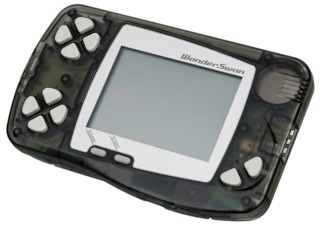
Log in to comment